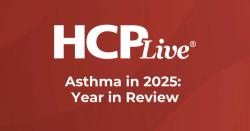
OR WAIT null SECS
Bronchodilator Therapy in Tobacco-Exposed Individuals Doesn't Relieve Symptoms
Respiratory symptoms are significant among individuals with a history of smoking tobacco even without airflow obstruction.
Implementing inhaled dual bronchodilator therapy won't help to relieve respiratory symptoms in symptomatic, tobacco-exposed individuals according to a recent study. Investigators assessed the SGRQ and spirometry scores of individuals with preserved lung function to determine if bronchodilator treatment could help with symptoms.
A common treatment for this population is chronic obstructive pulmonary disease (COPD) medication, though there's limited evidence to support the success of this approach. Respiratory symptoms are significant among individuals with a history of smoking tobacco even without airflow obstruction.
Meilan K. Han, MD, Division of Pulmonary and Critical Care, University of Michigan, and invetstigators aimed to evaluate if an inhaled bronchodilator, glucocorticoid, or antibiotic agent would alleviate symptoms.
12 Weeks of Bronchodilator Therapy
Participating individuals who had a smoking history of at least 10-pack years, respiratory symptoms, and preserved lung function were randomized to receive either indacaterol (27.5 μg) plus glycopyrrolate (15.6 μg) or placebo twice daily for 12 weeks.
A 4-point decrease in the St. Geroge's Respiratory Questionnaire (SGRQ) score (ranged 1-100) after 12 weeks without treatment failure was the primary endpoint. If any individuals experienced an increase in lower respiratory symptoms, it would be indicated as treatment failure.
Respiratory symptoms were determined by the COPD Assessment Test. Inclusion criteria was a score of at least 10 (ranged 0-40, with higher scores indicating worse symptoms) at baseline. Preserved lung function was measured with spirometry. Inclusion criteria was forced expiratory volume in 1 second (FEV1) to forced vital capacity (FVC) ≥0.70 and FVC ≥70% of the predicted value after bronchodilator use.
Respiratory Symptom Results
A total of 535 individuals participated in the study, with the modified intention-to-treat population consisting of 471.
The results showed similar outcomes between the treatment and placebo groups when analyzing the SGRQ scores. Of the 227 individuals in the treatment group, 128 (56.4%) met the 4-point decrease, as did 144 of 244 (59%) in the placebo group.
Mean percent changes of predicted FEV1 was 2.48 percentage points in the treatment group and −0.09 percentage points in the placebo group. As for mean changes in the inspiratory capacity, investigators reported 0.12 liters in the treatment group and 0.02 liters in the placebo group.
The treatment group had 4 serious adverse events and 11 occurred in the placebo group, though none were deemed potentially related to the treatment or placebo.
"Inhaled dual bronchodilator therapy did not decrease respiratory symptoms in symptomatic, tobacco-exposed persons with preserved lung function as assessed by spirometry," investigators concluded.
The study "Bronchodilators in Tobacco-Exposed Persons with Symptoms and Preserved Lung Function" was published in The New England Journal of Medicine.


